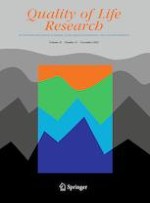27-07-2022
Cancer-related fatigue mediates the relationships between physical fitness and attendance and quality of life after participation in a clinical exercise program for survivors of cancer
Gepubliceerd in: Quality of Life Research | Uitgave 11/2022
Log in om toegang te krijgenAbstract
Purpose
Cancer-related fatigue (CRF) is a common and limiting symptom reported by survivors of cancer, negatively impacting health-related quality of life (HRQoL). Exercise improves CRF, HRQoL, and physical fitness in survivors. Prospective research trials have shown that exercise-associated fitness improvements effects on HRQoL are mediated by CRF; however, this has not been investigated in a pragmatic real-world setting. This study utilizes data from a large heterogenous population of survivors participating in a clinical exercise program to investigate this mediation effect, as well as effects of program attendance.
Methods
Data were collected from 194 survivors completing the BfitBwell Cancer Exercise Program (July 2016–February 2020). Changes in HRQoL, CRF, and fitness were calculated and program attendance collected. Basic correlation analyses were performed. Linear regression analyses were performed to assess mediation by CRF.
Results
All measures of CRF, HRQoL, and physical fitness significantly improved following the exercise program. Improvements in physical fitness were significantly correlated with improvements in HRQoL (r = 0.15–0.18), as was program attendance (r = 0.26) and CRF (r = 0.59). The effects of physical fitness and program attendance on HRQoL were at least partially mediated by the effects of CRF.
Conclusion
This study extends research findings on how exercise programs improve HRQoL in survivors of cancer to a real-world setting. Results indicate that clinical exercise programs should target reductions in CRF in survivors (during or after treatment) through improvements in physical fitness to improve HRQoL and that high attendance should be encouraged regardless of fitness changes.
